Key Takeaways
1. Creating is ordinary, not extraordinary
Creation is not extraordinary, even if its results sometimes are. Creation is human. It is all of us. It is everybody.
Everyone can create. The idea that only rare geniuses can innovate is a myth. Throughout history, countless individuals from diverse backgrounds have made significant contributions across fields. From Edmond Albius, a young slave who revolutionized vanilla cultivation, to the Wright brothers inventing flight, creativity stems from ordinary people solving problems.
Creation is incremental. Most innovations build on existing knowledge and occur through small, gradual improvements rather than sudden breakthroughs. The process involves:
- Identifying problems
- Proposing potential solutions
- Testing and refining ideas
- Learning from failures
- Persisting through challenges
This step-by-step approach is accessible to all, not just an elite few. By embracing creativity as a normal human trait, we can unlock the innovative potential in ourselves and others.
2. Thinking is a step-by-step process, not sudden leaps
Minds do not leap. Observation, evaluation, and iteration, not sudden shifts of perception, solve problems and lead us to creation.
The myth of 'Aha!' moments misleads us about how creativity works. Studies show that even apparent flashes of insight are the result of gradual, step-by-step thinking processes. Karl Duncker's problem-solving experiments revealed that people approach challenges through a series of small mental steps, not dramatic leaps.
Examples of incremental thinking:
- Wright brothers: Developed flight through years of careful experimentation and refinement
- Steve Jobs: iPhone design evolved through many iterations, not a single flash of inspiration
- Wassily Kandinsky: Created abstract paintings through numerous sketches and revisions
Understanding creativity as a methodical process rather than waiting for lightning strikes of genius allows us to cultivate innovation more effectively. It emphasizes the importance of persistence, experimentation, and learning from failures in the creative journey.
3. Expect and embrace adversity in the creative process
Creation is destination, the consequence of acts that appear inconsequential by themselves but that, when accumulated, change the world.
Failure is essential to creation. Many great innovators faced significant setbacks and rejection before achieving success. Judah Folkman's groundbreaking cancer research was initially dismissed by the scientific community, but his persistence eventually led to revolutionary treatments. Embracing failure as a learning opportunity rather than a final verdict is crucial for creative progress.
Key aspects of dealing with adversity in creation:
- Expect rejection and criticism
- Learn from failures and use them to improve
- Develop resilience and persistence
- Recognize that setbacks are part of the process, not endpoints
- Seek constructive feedback while maintaining conviction in your ideas
By reframing adversity as a natural part of the creative journey, creators can push through challenges and achieve breakthroughs that might otherwise remain undiscovered.
4. Our perceptions shape what we see and create
There is nothing more deceptive than an obvious fact.
Inattentional blindness affects how we perceive the world and limits our creative potential. Our brains filter information based on expectations and prior knowledge, often causing us to overlook important details. This phenomenon explains why groundbreaking discoveries are sometimes hiding in plain sight, like the Helicobacter pylori bacteria that Robin Warren identified despite decades of scientists missing it.
Overcoming perceptual biases:
- Cultivate a "beginner's mind" to approach problems with fresh eyes
- Question assumptions and "obvious" facts
- Seek diverse perspectives to challenge your own viewpoint
- Practice active observation and mindfulness
- Be open to unexpected findings that contradict established beliefs
By recognizing and working to overcome our perceptual limitations, we can expand our creative horizons and uncover innovative solutions that others might miss.
5. Credit for creation is often misattributed or unequally distributed
We owe nearly everything to others. Generations are also generators.
The 'lone genius' myth obscures the collaborative nature of creation. Many celebrated innovations are the result of countless contributors, often spanning generations. Rosalind Franklin's crucial work on DNA structure, for example, was initially overlooked in favor of crediting male colleagues. Understanding creation as a collective effort challenges traditional notions of individual genius.
Factors contributing to unequal credit distribution:
- Historical biases (e.g., gender, race, social status)
- The "Matthew effect" - famous individuals receiving disproportionate credit
- Oversimplification of complex collaborative processes
- Emphasis on breakthroughs rather than incremental progress
Recognizing the interconnected nature of creation and giving credit more equitably can foster a more inclusive and productive creative environment. It also highlights the importance of building on existing knowledge and collaborating across disciplines.
6. Creation has unintended consequences that ripple through society
Chains of tools have chains of consequences.
Innovations transform society in ways their creators often cannot foresee. The introduction of automatic looms during the Industrial Revolution, for instance, initially threatened weavers' livelihoods but ultimately led to increased literacy and education as new, more complex jobs emerged. Understanding that every creation has far-reaching effects challenges us to consider the broader impact of our work.
Considering the ripple effects of creation:
- Anticipate potential negative consequences
- Strive for responsible innovation
- Remain open to adapting and improving creations over time
- Recognize that solving one problem may create new challenges
- Consider ethical implications of new technologies and ideas
By acknowledging the complex interplay between innovation and society, creators can work towards more thoughtful and sustainable solutions that benefit humanity in the long term.
7. Intrinsic motivation fuels the most impactful creative work
Work your best at being you. That's where home is.
External rewards can hinder creativity. Research shows that extrinsic motivators like money or recognition often reduce creative output and quality. Instead, the most innovative work tends to come from intrinsic motivation - the personal satisfaction and passion for the work itself. Woody Allen's refusal to attend award ceremonies exemplifies this focus on internal drive over external validation.
Fostering intrinsic motivation:
- Pursue projects aligned with personal interests and values
- Focus on the process and learning, not just outcomes
- Create for creation's sake, not for recognition
- Allow time for play and experimentation
- Cultivate autonomy and self-direction in creative work
By prioritizing intrinsic motivation, creators can maintain their creative spark and produce more authentic, impactful work over the long term.
8. Building creative organizations requires nurturing the right environment
Creation is action, not conversation.
Traditional organizational structures often stifle creativity. The success of innovative teams like Kelly Johnson's Skunk Works demonstrates the power of creating environments that foster creative thinking and rapid problem-solving. These organizations prioritize action over bureaucracy and empower individuals to take risks.
Key elements of creative organizations:
- Small, autonomous teams with clear goals
- Minimal hierarchy and bureaucracy
- Emphasis on rapid prototyping and iteration
- Tolerance for failure and learning from mistakes
- Open communication and idea-sharing
- Focus on solving real problems, not just following procedures
By intentionally designing workplaces that support creative thinking and action, organizations can unleash the innovative potential of their teams and achieve breakthrough results.
9. The myth of genius hinders our understanding of human potential
Genius as Galton defined it has no place in the twenty-first century—not because genius is not necessary but because we know it does not exist.
The concept of innate genius is rooted in harmful historical biases and pseudoscience. Francis Galton's work on "hereditary genius" promoted racist and classist ideas that still influence our perception of creativity today. Rejecting this myth allows us to recognize the creative potential in all individuals and cultivate a more inclusive approach to innovation.
Shifting our understanding of creativity:
- Recognize that creative ability is widely distributed across populations
- Focus on nurturing skills and providing opportunities rather than identifying "geniuses"
- Celebrate diverse forms of creativity and problem-solving
- Encourage collaboration and cross-pollination of ideas
- Emphasize the role of hard work, persistence, and learning in creative achievement
By moving beyond the genius myth, we can foster a more equitable and innovative society that taps into the creative potential of all its members.
Last updated:
FAQ
What's How to Fly a Horse about?
- Exploration of Creativity: The book argues that creativity is an ordinary human trait, not a rare gift, and that everyone has the potential to create.
- Historical Context: Kevin Ashton uses historical examples, like Edmond Albius and the Luddites, to show how creativity often stems from hard work and perseverance.
- Challenging Myths: Ashton challenges romanticized notions of creativity, emphasizing that it is a result of ordinary acts and accessible to all.
Why should I read How to Fly a Horse?
- Empowering Perspective: The book empowers readers by showing that creativity is accessible to everyone, encouraging them to embrace their own potential.
- Practical Insights: Ashton shares relatable stories and practical advice, making the book applicable to everyday life.
- Debunking Myths: It debunks common myths about creativity, helping readers understand that failure and rejection are part of the process.
What are the key takeaways of How to Fly a Horse?
- Creativity is Work: Ashton emphasizes that creating is not magic but requires persistence and effort over time.
- Everyone Can Create: The book asserts that creativity is a fundamental human trait, not limited to a few "geniuses."
- Value of Failure: Ashton highlights the importance of failure in the creative process, encouraging readers to embrace their mistakes.
What are the best quotes from How to Fly a Horse and what do they mean?
- "Creating is ordinary, even if the outcome is not.": This quote encapsulates the book's theme that creativity is a common human experience.
- "If you want to make an apple pie from scratch, you must first invent the universe.": This humorous quote by Carl Sagan illustrates the complexity and interconnectedness of creation.
- "Innovation is a series of repetitive failures.": This quote emphasizes that persistence through failure is essential for successful creation.
How does Kevin Ashton define creativity in How to Fly a Horse?
- Ordinary Process: Ashton defines creativity as an ordinary process involving hard work, iteration, and problem-solving.
- Accessible to All: He argues that creativity is inherent in all humans, encouraging everyone to engage in creative endeavors.
- Cumulative Effort: Creativity builds on the work of others, highlighting the importance of collaboration and innovation.
What role does failure play in How to Fly a Horse?
- Essential for Growth: Ashton posits that failure is crucial in the creative process, providing valuable lessons for success.
- Normalizes Setbacks: He normalizes setbacks, encouraging readers to view failure as a stepping stone rather than an endpoint.
- Encourages Persistence: The book suggests that many successful creators faced numerous rejections before achieving their goals.
How does Kevin Ashton use historical examples in How to Fly a Horse?
- Illustrative Stories: Ashton uses figures like Edmond Albius and Rosalind Franklin to show how hard work led to significant discoveries.
- Challenging Norms: These examples demonstrate that groundbreaking ideas often come from questioning established beliefs.
- Connecting Past to Present: Ashton connects past innovations to contemporary creativity, showing the timelessness of creation.
What is the significance of the "creativity myth" discussed in How to Fly a Horse?
- Misleading Beliefs: The "creativity myth" suggests creativity is a rare gift, which Ashton argues is misleading and harmful.
- Impacts Perception: This myth affects how society views creators, often leading to the belief that only certain individuals can contribute significantly.
- Encourages Inclusivity: By debunking this myth, Ashton promotes a more inclusive understanding of creativity.
How does Kevin Ashton address the concept of credit in How to Fly a Horse?
- Shared Contributions: Ashton emphasizes that most innovations result from collective efforts, challenging the idea of the "lone genius."
- Historical Context: He shows how many creators have been overlooked, highlighting the importance of recognizing all contributors.
- Encouraging Collaboration: The book suggests that recognizing shared credit can foster a more supportive creative environment.
What is the relationship between expertise and creativity in How to Fly a Horse?
- Expertise as a Tool: Ashton argues that expertise can enhance creativity but can also limit perspective if one becomes too entrenched.
- Beginner's Mind: He encourages experts to maintain an open attitude, allowing them to see new possibilities.
- Balance of Knowledge: While expertise is valuable, questioning assumptions and remaining open to new ideas is crucial for creativity.
How does How to Fly a Horse redefine the concept of genius?
- Genius as Myth: Ashton redefines genius as a myth that creates barriers to creativity, suggesting anyone can be creative with effort.
- Focus on Process: The book shifts focus from individual brilliance to the processes and practices that lead to creation.
- Encouraging Everyone: By debunking the myth of genius, Ashton encourages everyone to engage in creative pursuits.
What does Kevin Ashton say about the relationship between passion and creativity in How to Fly a Horse?
- Passion as a Driving Force: Ashton posits that passion fuels the desire to create and innovate, leading to meaningful creations.
- Balance of Knowledge and Passion: He highlights the need to balance passion with knowledge for successful creation.
- Intrinsic Motivation: The book emphasizes creating for the sake of creation, leading to more authentic and fulfilling work.
Review Summary
How to Fly a Horse challenges common myths about creativity, arguing that it stems from hard work rather than innate genius. Readers praised Ashton's engaging anecdotes and insights into the creative process, finding the book inspiring and thought-provoking. Many appreciated the debunking of creative myths and emphasis on persistence. Some critics found it repetitive or disagreed with certain arguments. Overall, reviewers found it an enjoyable and accessible exploration of creativity, invention, and discovery, with valuable lessons for fostering innovation in various fields.
Similar Books
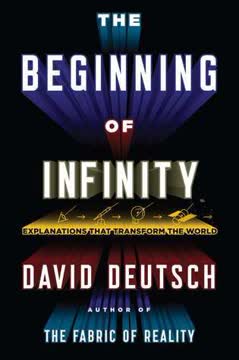
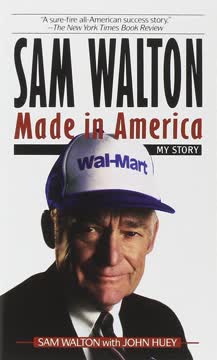


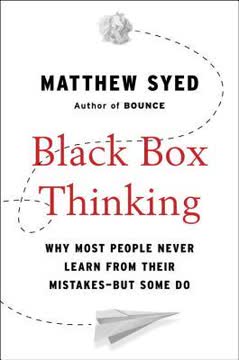

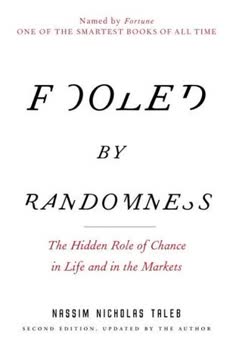
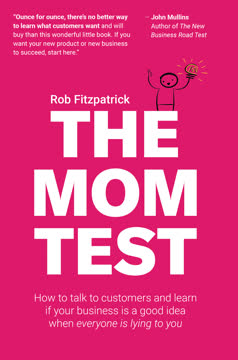


Download PDF
Download EPUB
.epub digital book format is ideal for reading ebooks on phones, tablets, and e-readers.




